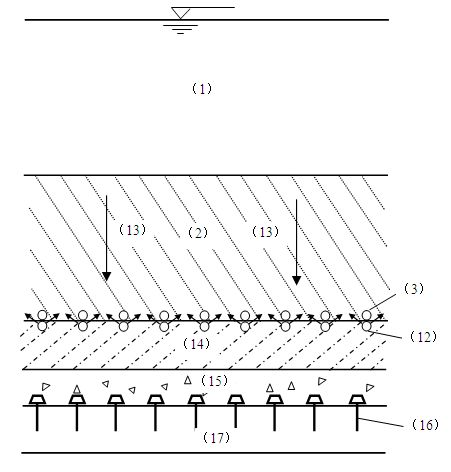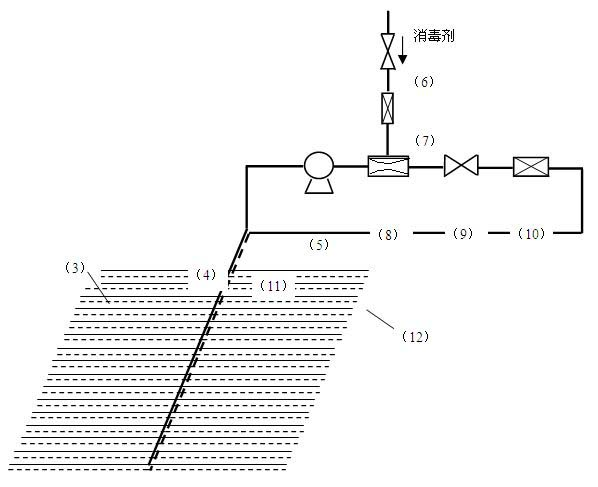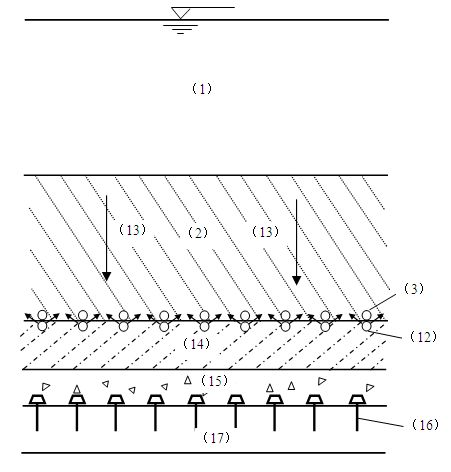Method for entrapping and inactivating aquatic organisms in biological activated carbon filter (BACF)
A technology of biological activated carbon and aquatic organisms, applied in biological water/sewage treatment, chemical instruments and methods, multi-stage water/sewage treatment, etc., can solve the problem of no aquatic organisms found, no obvious control effect, and reduction of biofilm on the surface of the filter material Biomass and biological activity and other issues to achieve the effect of ensuring biodegradation and adsorption functions, improving the safety and stability of effluent organisms, and prolonging the contact inactivation time
- Summary
- Abstract
- Description
- Claims
- Application Information
AI Technical Summary
Problems solved by technology
Method used
Image
Examples
Embodiment Construction
[0022] Refer to figure 1 with figure 2 In this embodiment, a quartz sand cushion and a disinfectant mixing dosing system is added to the biological activated carbon filter. The quartz sand cushion layer 14 is located below the activated carbon layer 2. The thickness of the quartz sand cushion layer 14 is determined according to the migration ability of the dominant species of aquatic organisms that breed in the biological activated carbon filter. The thickness of 300~400mm is recommended. The quartz sand cushion layer 14 The particle size gradation of the quartz sand is the same as that of the quartz sand filter material of the water supply plant. In the disinfectant mixing dosing system, the bottom of the perforated water collection branch pipe / or the perforated water collection channel 3 is connected to the top of the perforated water distribution branch pipe 12, and both are located at the interface between the activated carbon layer 2 and the quartz sand cushion layer 14. ...
PUM
| Property | Measurement | Unit |
|---|---|---|
| thickness | aaaaa | aaaaa |
Abstract
Description
Claims
Application Information
 Login to View More
Login to View More - R&D
- Intellectual Property
- Life Sciences
- Materials
- Tech Scout
- Unparalleled Data Quality
- Higher Quality Content
- 60% Fewer Hallucinations
Browse by: Latest US Patents, China's latest patents, Technical Efficacy Thesaurus, Application Domain, Technology Topic, Popular Technical Reports.
© 2025 PatSnap. All rights reserved.Legal|Privacy policy|Modern Slavery Act Transparency Statement|Sitemap|About US| Contact US: help@patsnap.com



